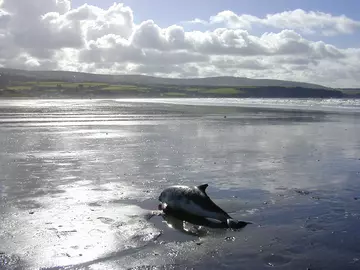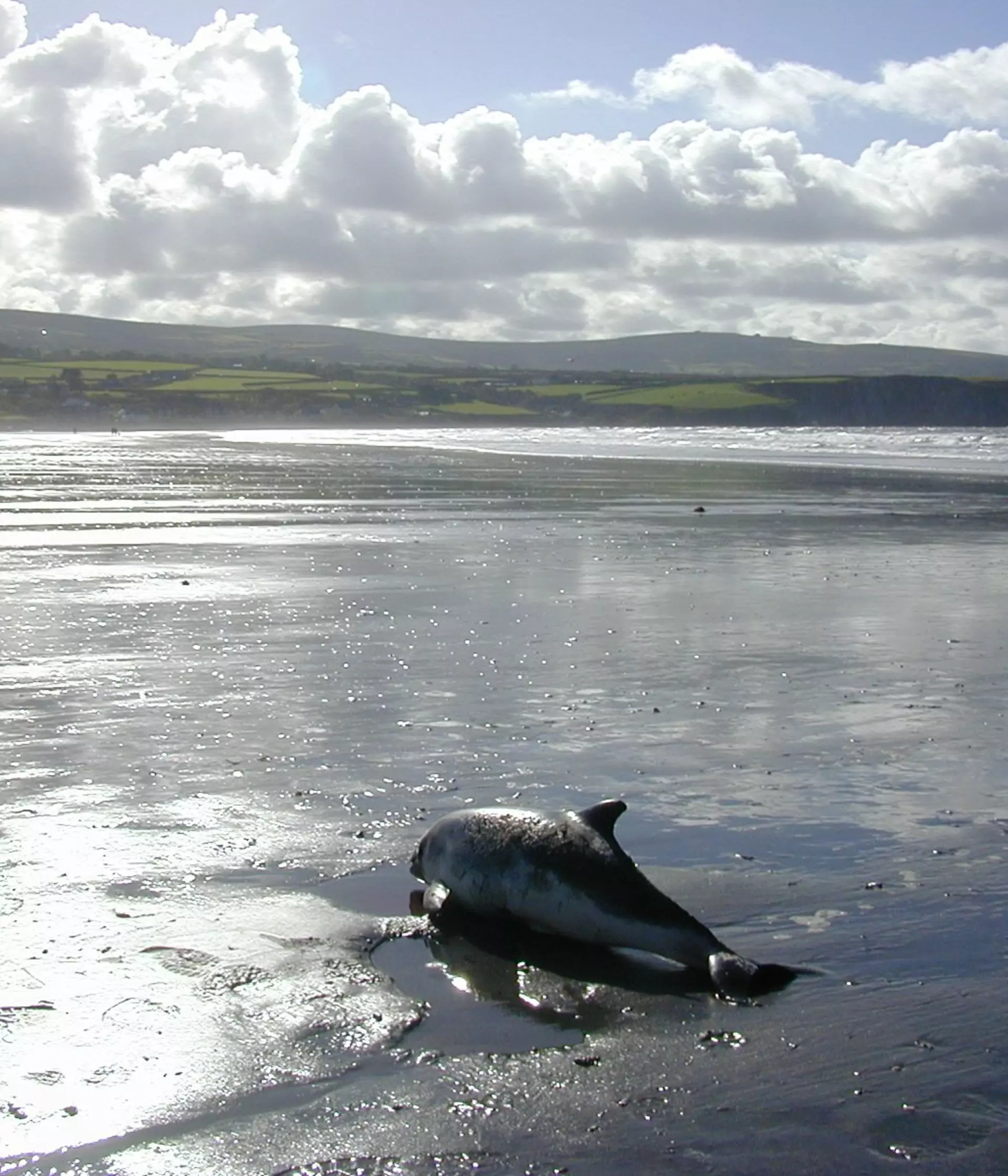
ZSL
Zoological Society of London
Polychlorinated biphenyls (PCBs) and the fertility of male harbour porpoises
A new study, published today by scientists at ZSL’s Institute of Zoology, has revealed that Polychlorinated biphenyls (PCBs) are affecting the fertility of male harbour porpoises – threatening the future breeding success of the species. ZSL’s lead researcher, Rosie Williams, tells us more about this latest study and what it could mean for whales, dolphins, and porpoises.
What are PCBs?
The chemicals were banned in the 1980s but were once widely used – in products varying from paint to electricals – but they continue to enter the marine environment via various mechanisms. For example, PCBs are still in use in paints and sealants in old buildings and for outer coating on ships, so if contaminated building materials are improperly disposed of they could also reach the environment, and demolition of buildings may cause PCBs to enter the air. A series of recent studies, including multiple studies led by ZSL’s Cetacean Stranding Investigation Programme (CSIP), like this one, have shown that they have had a lasting negative impact on the animals living in the environment.
What's the study about?
I’m part of CSIP, and we investigate the cause of whale, dolphin and porpoise strandings around the British coast – we’re building up a huge database of results, giving us an overall picture of not only the health of these species but the health of British waters in general.
To put it most simply, our study found that animals with higher concentrations of PCBs in their blubber had lower testes weights. This finding is particularly concerning in harbour porpoises because their sole mating strategy is to be as promiscuous as possible. They’re what’s known as sperm competitors in that the only way that they compete against other males is to maximise the number of times and number of females they mate with, so we think having large testes is a really important part of their mating strategy. Therefore, we believe it is likely that PCBs are causing reduced fertility in some individuals in this population of harbour porpoises.

How was the study conducted?
We measured the concentrations of PCBs present in the blubber of 267 harbour porpoises that stranded around the UK coast. Alongside this we collected lots of other data including, age, location, weight, length and testes weights which allowed us to build statistical models to determine whether PCB concentrations had any associated effect on testes weights.
We think it is unlikely that this is only happening in harbour porpoises. Several other species of marine mammals feed higher up the food chain and accumulate higher levels of PCBs therefore, we expect any impacts are likely to be more severe for them.
For example, in the UK we only have eight killer whales left of our resident population and the population haven’t had a calf in over 20 years - many scientists believe that’s because they’re exposed to such high levels of PCBs.
This kind of work is really important because it can be used to inform policy and conservation for those much more threatened species both in the UK and around the globe.
What are the other known effects of PCBs on cetaceans?
PCBs have been associated with suppression of the immune system, whereby animals exposed to higher levels are more likely to die from infectious disease. They have also been linked to increased calf mortality and foetus loss. In addition, studies on other mammalian species have found that they are carcinogenic and neurotoxic so there are a wide range of deleterious effects.

How many harbour porpoises are there in the UK – is it a healthy population?
It’s really difficult to get robust population estimates for harbour porpoises because they live underwater and have very large ranges so they’re very difficult to count! In the last 20 years three large scale surveys have been carried which have found that numbers are decreasing year-on-year however, this trend was not statistically significant due to the large uncertainties associated with collecting abundance data on these animals.
What does this mean for the porpoises, dolphins and whales living in these waters?
We hope to carry out more research to get a better understanding of how many individuals are impacted and what effect this has at population level. However, if PCB burdens are impacting both male and female fertility this could have serious consequences on the long-term population viability of marine apex predator populations that are highly-exposed to PCBs.
What can be done to protect porpoises?
While our findings are concerning, we hope that this work can drive legislation to aid conservation efforts and reduce the impacts of pollution on wildlife. Demonstrating the impacts of PCBs on cetacean health is key to improving conservation efforts and encouraging legislation and management actions to reduce the amounts of contaminants that enter the environment. Therefore, we hope this work will encourage UK and international governments to increase their efforts to properly dispose of the PCBs within their countries.
Climate change and human activity have pushed our precious planet to its limit, causing the devastating loss of so many habitats and species. From lab to field, hands on and behind the scenes, we’re leading the future of conservation, shaping agendas and influencing change to support better life, health and living for people and wildlife.
